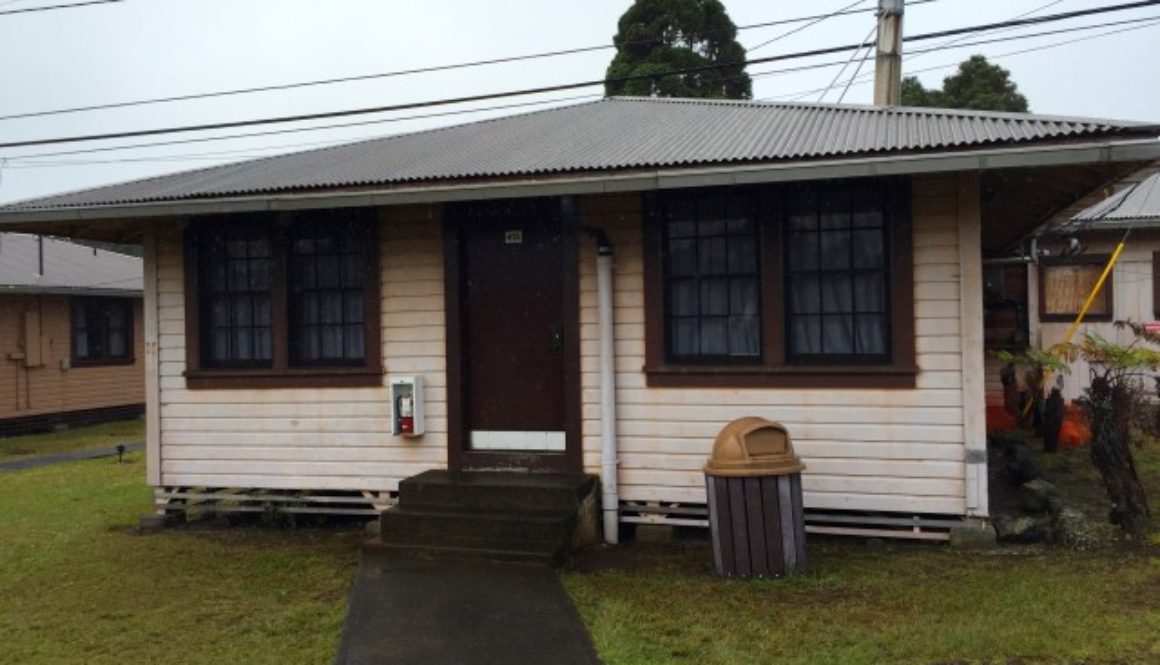A Day at the Hawaii Volcanoes National Park
How much time should you allot to tour the Hawaii Volcanoes National Park? You could stay a few short hours or even a few days, but my recommendation is to spend a full day in the park. The park’s web site has excellent planning information so be sure to review their links and trip planner. Essentially, there are two main tracks – the Crater Rim Drive tour and driving the Chain of Craters Road. Unfortunately, both routes have must-see attractions that you don’t want to skip. Get to the park as early as you can and even bring lunch along to enjoy at one of the sites. Better yet, stay at the Kilauea Military Camp inside the Hawaii Volcanoes National Park to get a sunrise start.
Because of our travel plans, we split our park visit, but we still weren’t able to see everything we wanted. In one afternoon, we drove the entire 18.8 miles of the Chain of Craters Road, starting in the cold, lush rainforest of Kilauea then descending 3700 feet to arid, lava-covered plains reaching the Pacific Ocean. While there are ten identified stops on the Chain of Craters Road, we didn’t stop at most of them. In our limited time, we really wanted to see the Holei Sea Arch at the End of Chain of Craters Road and the petroglyphs. We did stop off at the Kealakomo Overlook, marked by the wooden platform that gives better scenic viewing. The overlook is about the halfway point to the end of Chain of Craters Road.
About this time, you start feeling the drastic change in weather. Gone is the chilly mountaintop weather with the car’s AC now doing the cooling. Finally, we reach the end with the awaited sights to take in. The Holei Sea Arch stands with the waves slowly eroding this natural wonder.
Further up the coastline, the continuous strike of the waves carves the next formation for future visitors.
The end of the road has a small snack bar along with a few restrooms which you should take advantage of before making the drive back. On the return trip, you can now do the hike to the Pu‘u Loa Petroglyphs. Don’t rush on this short but rocky trail and look for the stone markers to keep your bearing.
After a longer-than-expected 0.7 miles, you’ll come to the raised platform protecting the largest petroglyph field in Hawaii where you’ll see ancient images carved in stone.
After exploring the Chain of Craters Road, it’s time for the shorter Crater Rim Drive with its nine designated stops. Although the Kilauea Visitor Center is a good place to start, it doesn’t open until 9am. The park is technically open 24 hours a day so if you’re early, bypass the Visitor Center to see and feel the steam vents and steaming bluff.
Seemingly at every hour of the day, the steam rises as moisture evaporates due to the natural underground heat.
Park your car and crisscross the trails in the area. Don’t worry, there isn’t much of a sulphur odor.
Once you’ve inhaled enough steam, continue on to Kilauea Iki Overlook and imagine that huge crater overflowing with molten lava.
At the overlook, there’s a half-mile hike through the rainforest if you want to experience another type of habitat.
Stop #6 is the Thurston Lava Tube. How Mr. Thurston found this lava tube trekking through the rainforest is beyond me.
Sadly, we missed three stops on the Crater Rim Drive Tour. We couldn’t squeeze in a visit to the Jaggar Museum during their hours of operation. We tried to hike the Devastation Trail but was rained out, and we just didn’t have time for the Keanakakoi Crater hike. But given a half day, I think we could have sufficiently seen the sights of Crater Rim Drive. So yeah, one full day at the Hawaii Volcanoes National Park is the minimum amount of time I would plan for. If you want a more leisurely stay or want to explore all the stops, then you’d have to stay at least two days. Kids as well as adults will find different aspects of the park to enjoy, so it’s a great trip for the entire family.
